Lukas Schulthess
TinyBird-ML: An ultra-low Power Smart Sensor Node for Bird Vocalization Analysis and Syllable Classification
Jul 31, 2024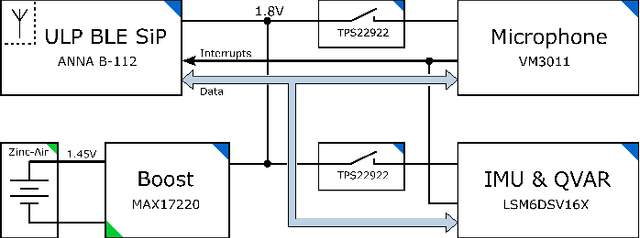
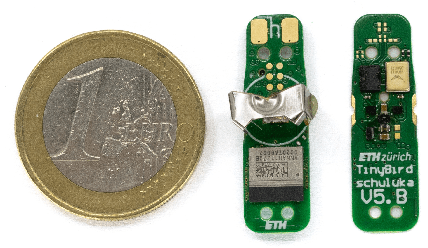
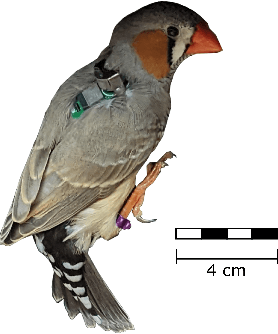
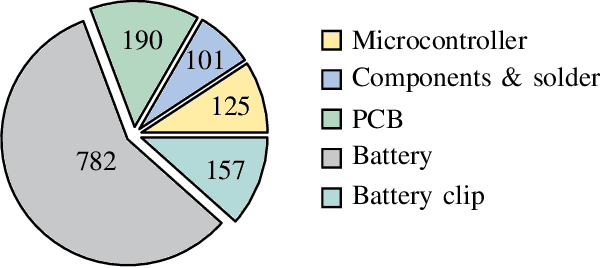
Abstract:Animal vocalisations serve a wide range of vital functions. Although it is possible to record animal vocalisations with external microphones, more insights are gained from miniature sensors mounted directly on animals' backs. We present TinyBird-ML; a wearable sensor node weighing only 1.4 g for acquiring, processing, and wirelessly transmitting acoustic signals to a host system using Bluetooth Low Energy. TinyBird-ML embeds low-latency tiny machine learning algorithms for song syllable classification. To optimize battery lifetime of TinyBird-ML during fault-tolerant continuous recordings, we present an efficient firmware and hardware design. We make use of standard lossy compression schemes to reduce the amount of data sent over the Bluetooth antenna, which increases battery lifetime by 70% without negative impact on offline sound analysis. Furthermore, by not transmitting signals during silent periods, we further increase battery lifetime. One advantage of our sensor is that it allows for closed-loop experiments in the microsecond range by processing sounds directly on the device instead of streaming them to a computer. We demonstrate this capability by detecting and classifying song syllables with minimal latency and a syllable error rate of 7%, using a light-weight neural network that runs directly on the sensor node itself. Thanks to our power-saving hardware and software design, during continuous operation at a sampling rate of 16 kHz, the sensor node achieves a lifetime of 25 hours on a single size 13 zinc-air battery.
Machine Learning In-Sensors: Computation-enabled Intelligent Sensors For Next Generation of IoT
Jul 31, 2024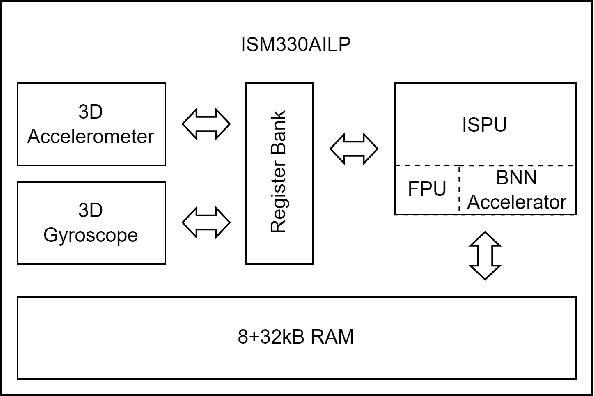
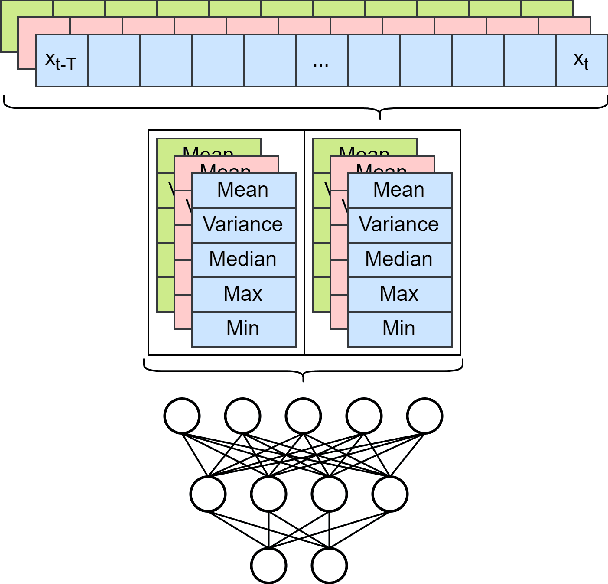
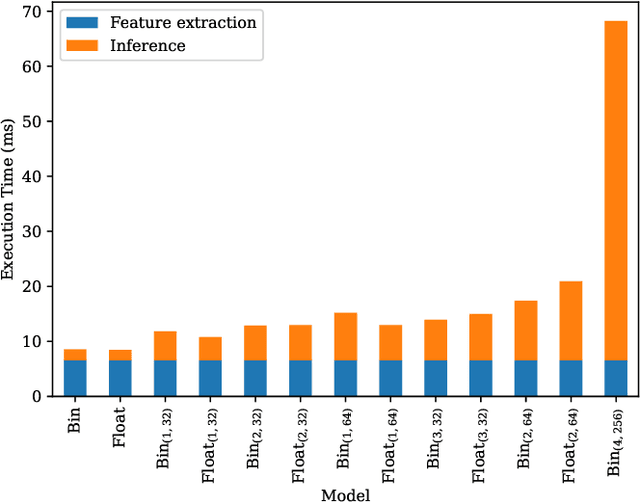
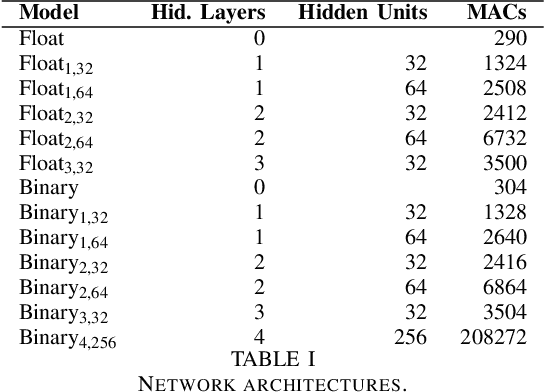
Abstract:Smart sensors are an emerging technology that allows combining the data acquisition with the elaboration directly on the Edge device, very close to the sensors. To push this concept to the extreme, technology companies are proposing a new generation of sensors allowing to move the intelligence from the edge host device, typically a microcontroller, directly to the ultra-low-power sensor itself, in order to further reduce the miniaturization, cost and energy efficiency. This paper evaluates the capabilities of a novel and promising solution from STMicroelectronics. The presence of a floating point unit and an accelerator for binary neural networks provide capabilities for in-sensor feature extraction and machine learning. We propose a comparison of full-precision and binary neural networks for activity recognition with accelerometer data generated by the sensor itself. Experimental results have demonstrated that the sensor can achieve an inference performance of 10.7 cycles/MAC, comparable to a Cortex-M4-based microcontroller, with full-precision networks, and up to 1.5 cycles/MAC with large binary models for low latency inference, with an average energy consumption of only 90 $\mu$J/inference with the core running at 5 MHz.
RF Power Transmission for Self-sustaining Miniaturized IoT Devices
Jul 31, 2024Abstract:Radio Frequency (RF) wireless power transfer is a promising technology that has the potential to constantly power small Internet of Things (IoT) devices, enabling even battery-less systems and reducing their maintenance requirements. However, to achieve this ambitious goal, carefully designed RF energy harvesting (EH) systems are needed to minimize the conversion losses and the conversion efficiency of the limited power. For intelligent internet of things sensors and devices, which often have non-constant power requirements, an additional power management stage with energy storage is needed to temporarily provide a higher power output than the power being harvested. This paper proposes an RF wireless power energy conversion system for miniaturized IoT composed of an impedance matching network, a rectifier, and power management with energy storage. The proposed sub-system has been experimentally validated and achieved an overall power conversion efficiency (PCE) of over 30 % for an input power of -10 dBm and a peak efficiency of 57 % at 3 dBm.
A Lora-Based and Maintenance-Free Cattle Monitoring System for Alpine Pastures and Remote Locations
Jun 10, 2024



Abstract:The advent of the Internet of Things (IoT) is boosting the proliferation of sensors and smart devices in industry and daily life. Continuous monitoring IoT systems are also finding applications in agriculture, particularly in the realm of smart farming. The adoption of wearable sensors to record the activity of livestock has garnered increasing interest. Such a device enables farmers to locate, monitor, and constantly assess the health status of their cattle more efficiently and effectively, even in challenging terrain and remote locations. This work presents a maintenance-free and robust smart sensing system that is capable of tracking cattle in remote locations and collecting activity parameters, such as the individual's grazing- and resting time. To support the paradigm of smart farming, the cattle tracker is capable of monitoring the cow's activity by analyzing data from an accelerometer, magnetometer, temperature sensor, and Global Navigation Satellite System (GNSS) module, providing them over Long Range Wide Area Network (LoRaWAN) to a backend server. By consuming 511.9 J per day with all subsystems enabled and a data transmission every 15 minutes, the custom-designed sensor node achieves a battery lifetime of 4 months. When exploiting the integrated solar energy harvesting subsystem, this can be even increased by 40% to up to 6 months. The final sensing system's robust operation is proven in a trial run with two cows on a pasture for over three days. Evaluations of the experimental results clearly show behavior patterns, which confirms the practicability of the proposed solution.
Skilog: A Smart Sensor System for Performance Analysis and Biofeedback in Ski Jumping
Sep 25, 2023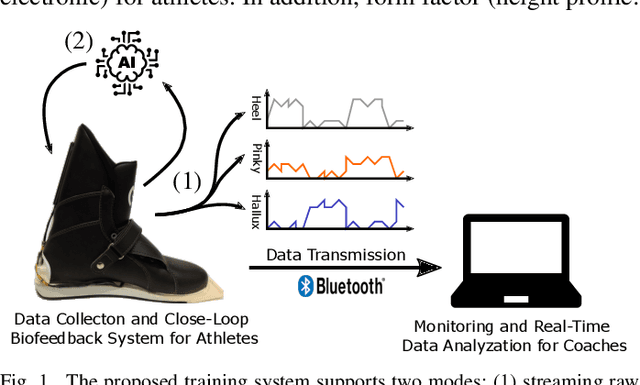
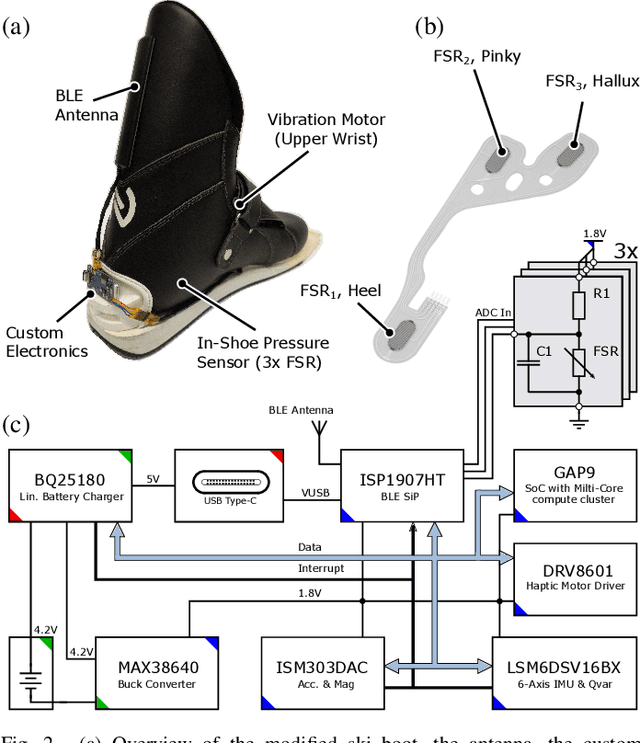


Abstract:In ski jumping, low repetition rates of jumps limit the effectiveness of training. Thus, increasing learning rate within every single jump is key to success. A critical element of athlete training is motor learning, which has been shown to be accelerated by feedback methods. In particular, a fine-grained control of the center of gravity in the in-run is essential. This is because the actual takeoff occurs within a blink of an eye ($\sim$300ms), thus any unbalanced body posture during the in-run will affect flight. This paper presents a smart, compact, and energy-efficient wireless sensor system for real-time performance analysis and biofeedback during ski jumping. The system operates by gauging foot pressures at three distinct points on the insoles of the ski boot at 100Hz. Foot pressure data can either be directly sent to coaches to improve their feedback, or fed into a ML model to give athletes instantaneous in-action feedback using a vibration motor in the ski boot. In the biofeedback scenario, foot pressures act as input variables for an optimized XGBoost model. We achieve a high predictive accuracy of 92.7% for center of mass predictions (dorsal shift, neutral stand, ventral shift). Subsequently, we parallelized and fine-tuned our XGBoost model for a RISC-V based low power parallel processor (GAP9), based on the PULP architecture. We demonstrate real-time detection and feedback (0.0109ms/inference) using our on-chip deployment. The proposed smart system is unobtrusive with a slim form factor (13mm baseboard, 3.2mm antenna) and a lightweight build (26g). Power consumption analysis reveals that the system's energy-efficient design enables sustained operation over multiple days (up to 300 hours) without requiring recharge.
ColibriUAV: An Ultra-Fast, Energy-Efficient Neuromorphic Edge Processing UAV-Platform with Event-Based and Frame-Based Cameras
May 27, 2023Abstract:The interest in dynamic vision sensor (DVS)-powered unmanned aerial vehicles (UAV) is raising, especially due to the microsecond-level reaction time of the bio-inspired event sensor, which increases robustness and reduces latency of the perception tasks compared to a RGB camera. This work presents ColibriUAV, a UAV platform with both frame-based and event-based cameras interfaces for efficient perception and near-sensor processing. The proposed platform is designed around Kraken, a novel low-power RISC-V System on Chip with two hardware accelerators targeting spiking neural networks and deep ternary neural networks.Kraken is capable of efficiently processing both event data from a DVS camera and frame data from an RGB camera. A key feature of Kraken is its integrated, dedicated interface with a DVS camera. This paper benchmarks the end-to-end latency and power efficiency of the neuromorphic and event-based UAV subsystem, demonstrating state-of-the-art event data with a throughput of 7200 frames of events per second and a power consumption of 10.7 \si{\milli\watt}, which is over 6.6 times faster and a hundred times less power-consuming than the widely-used data reading approach through the USB interface. The overall sensing and processing power consumption is below 50 mW, achieving latency in the milliseconds range, making the platform suitable for low-latency autonomous nano-drones as well.
 Add to Chrome
Add to Chrome Add to Firefox
Add to Firefox Add to Edge
Add to Edge